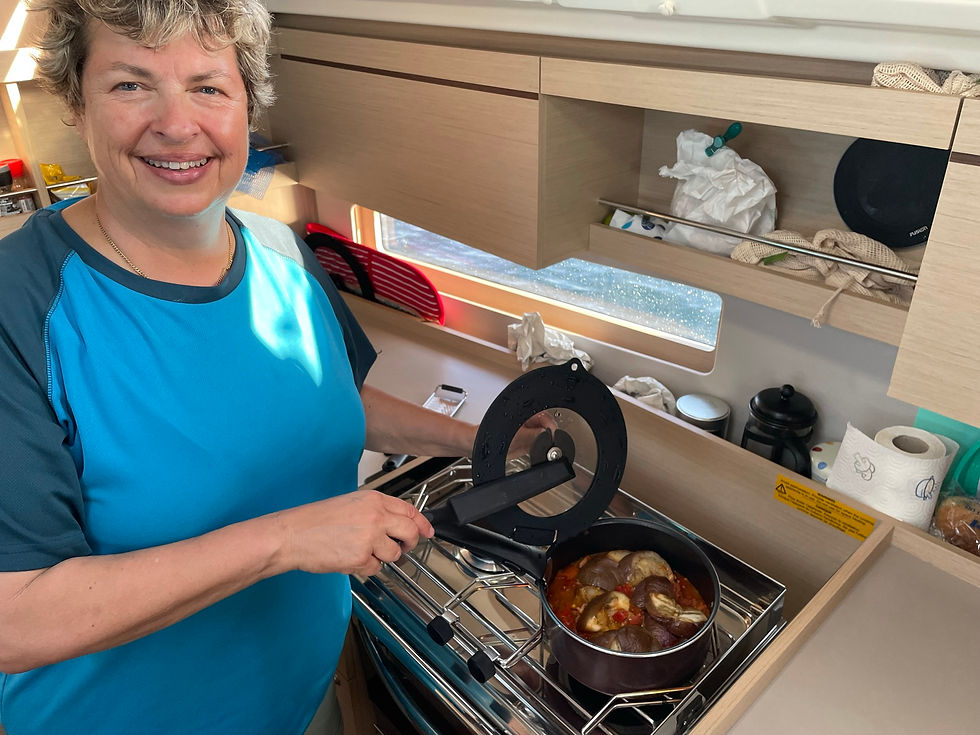Charlemagne and “Germany’s First Empire”
- Richard Crooks
- Apr 2
- 2 min read
Updated: Nov 13

The ‘Low Countries’ are well-named; the landscape, as we travelled eastwards across Belgium, is pretty flat and geologically featureless. As we passed into a small southern finger of the Netherlands, we crossed the Meuse north of Maastricht (meaning “crossing of the Meuse”). Here the landscape gradually changed to become more undulating and wooded.
We passed into Germany almost at once, and into the historic capital of the Franks in Aachen (Aken in Dutch, and Aix-la-Chappelle in French). The Franks were a Germanic people who had migrated westwards to here, and then southwards to conquer Gaul, which became known as Francia (France).
After the Roman empire retreated and fell, the Franks were united under the Merovingian family. After the usual ebbs and flows and general turmoil, a Carolingian Frank called Pepin the Short deposed the Merovingians. Pepin was son of the famous Charles Martel (after whom the Carolingian dynasty was named). Martel had defeated the advancing Muslim Umayyad forces at the Battle of Poitiers in 732.
As Pepin was a religious man, his success came with the blessing of the Pope. He became the ‘Protector of the Pope’, and Pepin's eldest son, Charlemagne, was later crowned ‘Emperor of the Romans’ by Pope Leo III. These Franks were considered (in the Catholics in west at least) to be the successors to Roman Empire. (The Orthodox church and Emperors based in Constantinople obviously felt differently.)
The main reason our road trip passed through Aachen is that it was the historic capital of Charlemagne, the founder of the Holy Roman Empire. Charlemagne started construction of a cathedral in 796, on the site of thermal springs (Aachen is a spa town). Specifically, we had come to see the original octagonal chapel, with its wonderful mosaics and domed roof.

The octagonal structure had often been used in the eastern empire beforehand and Charlemagne’s architect followed that template . The emperor's bones are contained in a gold coffin in the adjacent choir hall.
Now fast forward to the 20th century. Propaganda produced under Nazi Germany portrayed Charlemagne as the founder of Germany's first empire, and whose legacy the Nazis claimed. As such, it was of immense psychological value. We were to stumble across other examples of Nazi symbology symbols later on our tour through Bavaria.
Whereas Bruges was spared in World War II, Aachen, at first appearances was certainly not. It reminded me of west Berlin, i.e. barely and old building standing, save the cathedral and Rathaus (or city hall). The city was bombed and, in October 1944, the US 1st Infantry Division fought a significant urban battle here to take it. Aachen was the first German city - on internationally recognized German soil - to be captured by the Allies. Good pub quiz knowledge?
Our next stop would be Würzburg, and the start of the ‘Romantic Road’. Würzburg was to fare even worse than Aachen: the RAF sent 250 Lancasters and a fire-bombing raid of 17 minutes duration destroyed 90% of the city. Fortunately, Charlemagne’s 1,200-year-old cathedral had somehow been spared.
These historical connections provided much to to ponder, as I tucked into a delicious lunch of sauerbraten washed down with local beer.




Comments